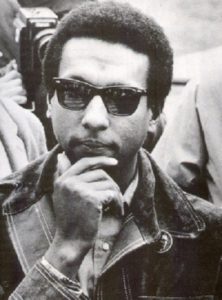[ad_1]
Spike Lee’s latest film, BlacKkKlansman, already being heralded as one of his finest, details the story of the first Black Colorado Springs Police Department detective, Ron Stallworth. He brilliantly infiltrated the Ku Klux Klan during the early 1970s and penned a memoir on the unbelievable experience that, in the hands of one of America’s most respected filmmakers, has become a major motion picture that not only speaks to its era but also to modern race relations and politics.
In fact, the parallels drawn between the KKK of years past and their present incarnation are clear, but more important, uncomfortably accurate. Still, Lee believes in letting his audience draw their own conclusions.
“I respect my audience and their intelligence. They’ll take away whatever they take away from it, depending on their own experience. People aren’t a monolithic group; we have various opinions, which is a great thing,” the acclaimed director says.
For the proud Brooklynite, it’s all about starting a dialogue, something his films have become known for over the past three decades.
“As a director, I experienced it with Malcolm X and other films, where the movie ends and they don’t leave the theater. They stay to talk about it, and I think that’s going to happen with BlacKkKlansman as well.”
Although Lee has yet to be confronted by anyone from the notorious hate group, former Grand Wizard of the Ku Klux Klan David Duke did reach out to Stallworth himself days before the film’s release, concerned about his image while admitting he was bamboozled by the officer 40 years prior.
“When the trailer came out months ago,” Lee shares, “Duke said it was all lies but then copped to it later. Everything in the book . . . happened, and he had to fess up to that.”
As a young detective, one of Stallworth’s first assignments was to attend a Colorado State Black Student Union rally where civil rights activist Kwame Ture, previously known as Stokely Carmichael, had been invited to speak. Lee chose to take excepts from several of the Pan-African leader’s speeches for the powerful scene, knowing that his words still ring true today.
“Kwame was ahead of his time!” Lee exclaims. “When he spoke about racist cops and what was happening to Black people, we’re still dealing with that today. He never really got the respect that went to Dr. King and Malcom X, but he was the one who coined the phrase ‘Black Power.’”

Ture, played by Corey Hawkins, also spoke of rejecting the idea of a “White savior,” the theory that a White person must rescue people of color in order for us to see real justice. Stallworth’s partner, Flip Zimmerman, could be categorized as such on a surface level because he also risked his life while interacting, undercover, with the Klan. The difference lies in intention; having competent, knowledgeable, well-meaning allies such as Zimmerman, portrayed by Adam Driver, is essential to our progress. The iconic director uses the election of former President Barack Obama to solidify this point.
“Barack Obama would not have been elected president with the Black vote alone. There’s literally not enough of us, and he knew that. He brought together diverse coalitions to be elected, and I see this the same way.”
Leading man John David Washington portrays Stallworth in the film with humor and heart, following in his father’s, Denzel Washington’s, footsteps. When it came to casting his latest joint, Lee knew the kid could handle it.
“There was no audition, no meeting, no reading, I just offered it to him. I knew he had it like the back of my hand! It was a blessing. A brilliant father and son; it worked out.”
As an artist, Lee always has something on the horizon, and he confirmed that 40 Acres & a Mule Filmworks just wrapped filming Season Two of Netflix hit She’s Gotta Have It. The focus today, however, is on the possible impact of BlacKkKlansman, which is sure to make you laugh, think and face one of our country’s most disappointing truths: The more things change, the more they stay the same.
BlacKkKlansman is in theaters now.
[ad_2]
Source link

